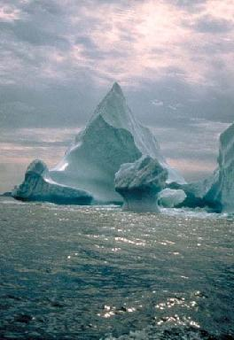NOAA/WDS Paleoclimatology - Barrows et al. 2000 Southwest Pacific Faunal-Based LGM SST Estimates
This archived Paleoclimatology Study is available from the NOAA National Centers for Environmental Information (NCEI), under the World Data Service (WDS) for Paleoclimatology. The associated NCEI study type is Paleoceanography. The data include parameters of climate reconstructions|paleoceanography with a geographic location of South Pacific Ocean. The time period coverage is from Unavailable begin date to Unavailable end date in calendar years before present (BP). See metadata information for parameter and study location details. Please cite this study when using the data.
- Cite as: Juggins, S.; Barrows, T.T.; De Deckker, P.; Martinez, J.I.; Thiede, J. (2001-07-01): NOAA/WDS Paleoclimatology - Barrows et al. 2000 Southwest Pacific Faunal-Based LGM SST Estimates. [indicate subset used]. NOAA National Centers for Environmental Information. https://doi.org/10.25921/0wkw-4647. Accessed [date].
- Please refer to Credit tab for full citation information.
- doi:10.25921/0wkw-4647
- noaa-ocean-8667
- NCEI DSI 1200_02
- NCEI DSI 1200_01
noaa-ocean-8667
| Search Data |
|
| Download Data |
|
| Distribution Formats |
|
| Ordering Instructions | Contact NCEI for other distribution options and instructions. |
| Distributor | NOAA National Centers for Environmental Information
ncei.info@noaa.gov |
| Dataset Point of Contact | NOAA National Centers for Environmental Information
ncei.info@noaa.gov |
| Dataset Point of Contact | Data Center Contact
NOAA World Data Service for Paleoclimatology 828-271-4800 paleo@noaa.gov |
| Coverage Description | Paleo date information not available. |
| Time Period | 1950 to Present |
| Spatial Bounding Box Coordinates |
N: -10
S: -50
E: -130
W: -170
|
| Spatial Coverage Map | |
| General Documentation |
|
| Associated Resources |
|
| Publication Dates |
|
| Data Presentation Form | Digital table - digital representation of facts or figures systematically displayed, especially in columns
|
| Dataset Progress Status | Complete - production of the data has been completed |
| Data Update Frequency | Data update frequency not available |
| Supplemental Information |
ABSTRACT SUPPLIED BY ORIGINATOR: The southwest Pacific Ocean covers a broad range of surface-water conditions ranging from warm, salty water in the subtropical East Australian Current to fresher, cold water in the Circumpolar Current. Using a new database of planktonic foraminifera assemblages (AUSMAT-F2), we demonstrate that the modern analog technique can be used to accurately reconstruct the magnitude of sea-surfacetemperature (SST) in this region. We apply this technique to data from 29 deep-sea cores along a meridional transect of the southwest Pacific Ocean to estimate the magnitude of SST cooling during the Last Glacial Maximum. We find minimal cooling in the tropics (0°–2°C), moderate cooling in the subtropical midlatitudes (2°–6°C), and maximum cooling to the southeast of New Zealand (6°–10°C). The magnitude of cooling at the sea surface from the tropics to the temperate latitudes is found to generally be less than cooling at the surface of adjacent land masses.
|
| Purpose | Records of past climate and ocean circulation derived from marine sediments. Parameter keywords describe what was measured in this dataset. Additional summary information can be found in the abstracts of papers listed in the dataset citations. |
| Dataset Citation |
|
| Cited Authors |
|
| Originators |
|
| Publishers |
|
| Theme keywords | Global Change Master Directory (GCMD) Science Keywords
|
| Data Center keywords | Global Change Master Directory (GCMD) Data Center Keywords
|
| Place keywords |
|
| Use Constraints |
|
| Access Constraints |
|
| Fees |
|
Last Modified: 2024-04-11
For questions about the information on this page, please email: ncei.info@noaa.gov
